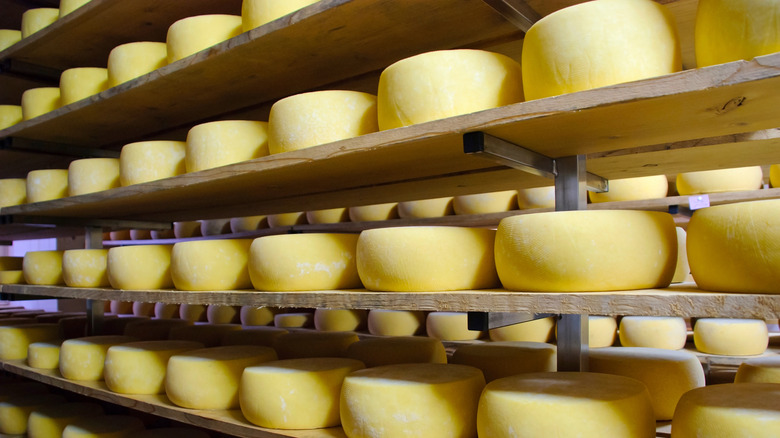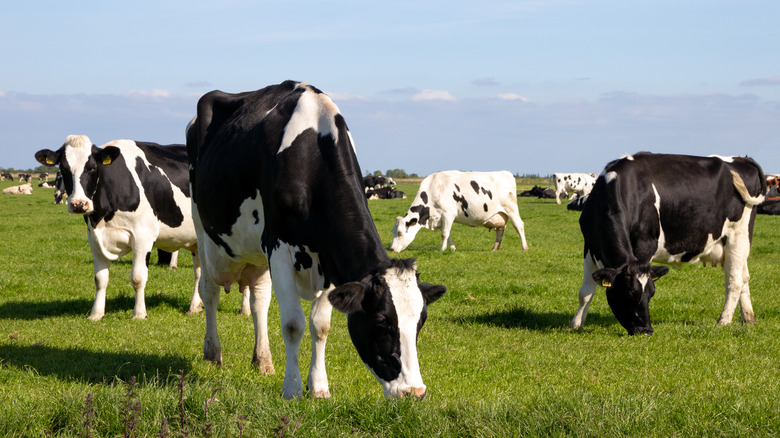The Reason São Jorge Cheese Is So Rare
You've probably never heard of São Jorge, a 95 square mile volcanic island situated in the middle of the Atlantic Ocean where the cows outnumber human inhabitants. Part of what is known as the central group of the islands that make up the Portuguese archipelago called the Azores, São Jorge is known for producing its namesake cheese, which Business Insider describes as "one of the richest and most elaborate cheeses on earth."
Cheesemaking has become integral to the island's identity, practiced for more than 500 years. What makes São Jorge cheese so special? A number of factors contribute to its rareness, most notably its remote location and the fact that it's made exclusively on the island, but soil and climate also play a significant role. The island is essentially a cow's paradise, its volcanic geology producing rich and fertile soil where well-fed bovines happily free range graze on grasses all year long.
São Jorge cheese's distinct richness of flavor derives from these ideal grazing conditions. After all, content cows make for some delectable cheese. But beyond just happy cows producing high quality milk, there is a special process by which São Jorge cheese is made, which has earned it designation of protected origin status (D.O.P.). In fact, according to "The Complete Idiot's Guide to Cheeses of the World," it was one of "the first five cheeses to be given such protection" by the Portuguese government.
Preserving a unique sense of place
In order to receive its D.O.P. distinction, São Jorge cheese had to "first be approved by its country's national system of standards, which include rigorous quality and production regulations," says the Food Network. It must also be produced in accordance with "local traditions" and retain the qualities of the locale, including "soil attributes, water and climate — factors that cannot be duplicated elsewhere." In essence, it is a one-of-a-kind product on the entire planet.
As for that cheese-making process, part of what sets São Jorge apart is how it is stored and aged. While most cheeses are aged in temperature-controlled rooms, São Jorge gets aged "at room temperature," via Business Insider. There is a method to the madness, as São Jorge's humid climate imbues the cheese with moisture that adds a "tangy and peppery" spiciness.
But what really makes São Jorge cheese so unique and gives it a sense of place is just how local producers preserve the "flavors of the island in the cheese." They keep the cow's milk raw and unpasteurized and "use whey from the day before to ferment the milk instead of adding other fermenting agents," which is a way to retain the milk's natural qualities. This approach also lengthens the process to split the milk into curds to four hours, "more than double the time other cheeses take." It then is salted and molded and matured over the course of three to seven months, becoming a semi-hard, yellowish cheese.

